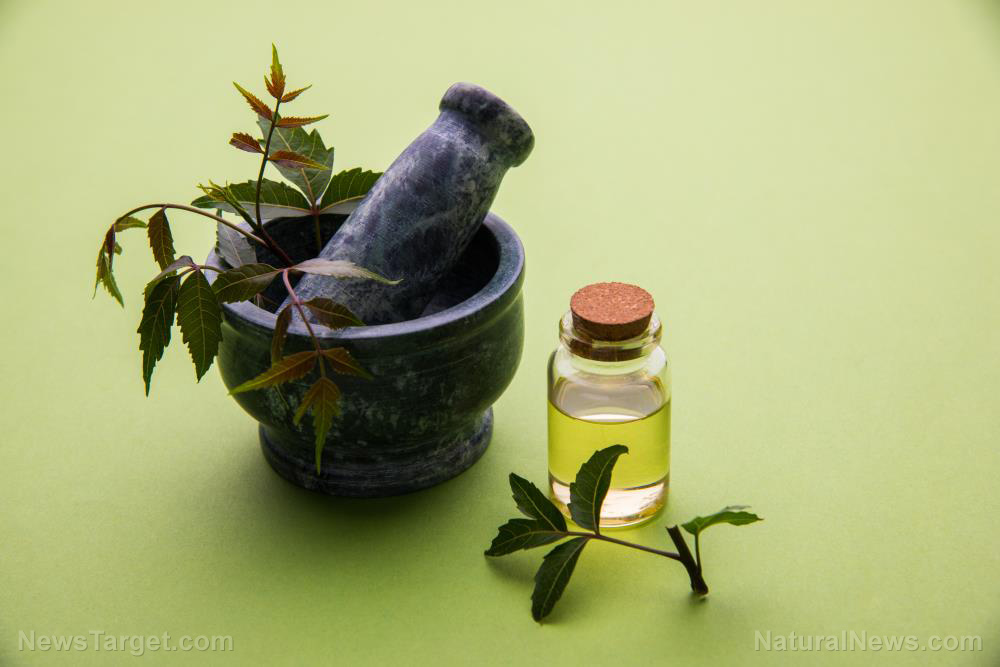
Neem oil, an antioxidant-rich natural cure
Neem oil is a natural product that comes from the neem tree. In Traditional Chinese and Ayurvedic Medicines, neem oil is used to treat different conditions like fungal infections and ulcers. Neem oil is full of fatty acids like palmitic acid, linoleic acid and oleic acid, all of which help boost skin health. Because of these benefits, the oil is often used as an ingredient in various skincare products. Neem leaves also offer health benefits because they contain flavonoids and polyphenols that have amazing antioxidant, anti-inflammatory and antibacterial properties. Surprisingly, the Environmental Protection Agency (EPA) reports that neem oil contains azadirachtin, a natural pesticide.Using neem oil to boost skin health
According to some studies, neem oil can be used in general skincare or as a treatment for many skin conditions. A review of existing literature on neem suggests that its extracts can treat skin conditions like acne, eczema, psoriasis, ringworm and warts. Here are some of the health benefits associated with neem oil. It has anti-aging effects A study published in the Journal of Photochemistry and Photobiology B: Biology investigated whether neem oil can prevent skin aging. For the study, researchers exposed hairless mice to skin-damaging ultraviolet B radiation. They then treated the animals with neem oil. The researchers reported that neem oil was effective at reducing the following symptoms of skin aging:- Skin redness
- Skin thickening
- Water loss
- Wrinkles
Considerations when using neem oil
Neem oil is generally considered safe for use, but the EPA classifies the oil as a "low toxicity" substance, which means using it may cause allergic reactions, such as contact dermatitis. Ingesting trace amounts of neem oil isn't linked to serious side effects, but consuming large quantities can cause negative side effects, particularly in children. These may include:- Encephalopathy (brain disease, disorder, or damage)
- Liver damage
- Metabolic acidosis
- Vomiting
Tips for buying and using neem oil
When buying the oil, choose organic, cold-pressed neem oil. The oil should have a cloudy, yellow-brown color and a strong odor, like a mix between garlic and sulfur. Neem oil is generally safe to apply to your skin, but if you haven't used it before, do a patch test first. To perform a patch test, mix a couple of drops of neem oil with water or liquid soap. Apply the mixture to a small area of skin on your arm or on the back of your hand. Observe your skin for possible reactions. If your skin becomes red, inflamed or itchy, dilute the neem oil immediately by adding more water or liquid soap. If you're allergic to neem oil, you may develop hives or a rash after a patch test. Don't use the oil or other products that contain it if this is the case.Using neem oil for skincare
You can try using neem oil to address skin conditions like infections and acne. To mask neem oil's strong scent, combine it with a fragrant carrier oil like almond, coconut or jojoba oil. Carrier oils also help the skin absorb neem oil. You can also use essential oils like lavender or sandalwood. Use tea tree oil to make a blend with a more medicinal smell. The ratio should be two to five milliliters (mL) of neem oil for every 100 ml of oil mixture or one-half to one teaspoon to four ounces. To use the mixture as a spot treatment, apply a small amount of diluted neem oil to the affected area. Let the mixture soak into your skin, then rinse it off with warm water. Once you have confirmed that you can safely use neem oil without any side effects, combine it with a fragrant carrier oil like coconut oil to treat mild skin conditions like acne. Sources include: MedicalNewsToday.com DiscoverNeem.comBesides causing cancer in humans, Roundup also kills bees
By Ethan Huff // Share
Boost your vitamin D intake naturally by eating these 7 amazing superfoods
By Joanne Washburn // Share
Natural relief: 10 Ways to treat dry mouth
By Zoey Sky // Share
For the men: Thai ginseng improves sexual health, treats erectile dysfunction
By Evangelyn Rodriguez // Share
A viral video ignites federal firestorm over Minnesota fraud
By willowt // Share
Russia activates "unstoppable" Poseidon tsunami drone
By kevinhughes // Share
Russian FM Lavrov: Moscow will back China on Taiwan issue
By ramontomeydw // Share
The breakfast clock: Why timing your morning meal is a secret weapon against high cholesterol
By jacobthomas // Share
The Health Ranger's New Year Revolution: The ultimate guide to health, wealth and freedom
By kevinhughes // Share
"Absolute Healing" on BrightU: Experts explore COVID-19 as an engineered bioweapon
By jacobthomas // Share











